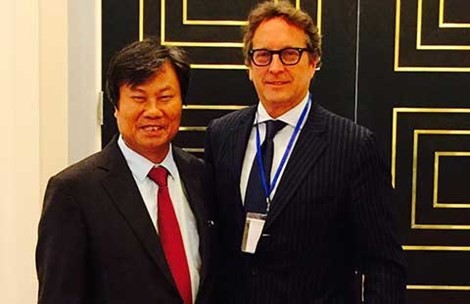Patent ownership of an
invention or a utility is only established by the registration procedure, and
in accordance with the scope of protection defined in each patent
in Vietnam.
Once a dispute arisen,
without other evidences, the patent is the only and the most important proof to
prove the ownership. Therefore, it is advised that filing a
patent for an invention or a utility model shall be a
prior prevention of an infringement.
Under the laws on Intellectual Property of
Vietnam:
“Invention” means a
technical solution in the form of a product or process which is intended to
solve a problem by application of natural laws.
Unless an invention is
common knowledge, it shall be protected in the form of the grant of a utility
solution patent (or a utility model) when it satisfies the following
conditions:
-It is novel
-And it is susceptible
of industrial application.
With highly
professional staff and great experience in IP aspect in Vietnam, ANT Lawyers
would like to support you in filing a Patent on an invention or a utility in
Vietnam.
1. Our services in
Patent for invention and Utility model
Our services in Patent
field include:
-Searching, provision
of professional opinions and advice in relation to registering ability of
Patent/Utility model;
-Preparation, drafting
the description and necessary documents, filing and prosecution of applications
Patent/Utility model;
-Maintenance;
-Amendment;
-License;
-Assignment;
-Opposition against
proceedings;
-Appeal;
-Cancellation;
-Invalidation;
2. How to file a patent
in Vietnam
Inventors or
Organizations or individuals who have supplied funds and material facilities to
inventors in the form of job assignment or hiring have the right to file patent
application in Vietnam.
An invention shall be
protected in Vietnam when it satisfies the following conditions:
-Novelty;
-Inventive step;
-Industrial
applicability;
3. Required information
and documents
For the purpose of
filling the patent application in Vietnam, the following documents will be
required:
-Full name and address
of applicant(s);
-Full name, address and
nationality of inventor(s).
-Original Power of
Attorney (POA) from the Applicant(s)
-Copy of the
description, drawings and abstract of the patent application in English (in
Word format) and/or the amended description, claims (if any);
-Certified document for
claiming priority right (if any).
Note: The POA must be
signed by the applicant or a duly authorized representative on behalf of the
Applicant and no further notarization or legalization is required.
4. Patent Examination
Procedure
The patent application
will be examined by National Office of Intellectual Property of Viet Nam (NOIP)
with Patent Examination Procedure as below:
-Formality examination:
Under Intellectual Property Law of Vietnam, the above application will be
examined as to form within one [01] month as from the filing date or date
entering the national phase. If the invention application meets the
requirements as to form, the NOIP will issue a decision of formality acceptance
and then the application will be further processed. Publication of the Patent
Application is within 02 months from publication date of 19 months from
priority date.
-Substantive
Examination: Substantive Examination does not automatically proceed from
filing, and the applicant must request for substantive examination by 42 months
from the priority date, or by 36 months if the request is for a utility model,
otherwise the application will be considered as withdrawn.
-Notification of the
Substantive Examination Results.
-The Decision of
Refusal or Request to pay fee.
-Issuing the Patent of
Invention.
5. Patent Term and
Maintenance
Invention patents shall
each have a validity starting from the grant date and expiring at the end of 20
years after the filing date. The owner of a Patent for Invention or Patent for
Utility Model is required to pay annuity fees in order to maintain its
validity.
If you are looking for
an experienced IP
services in Vietnam to help you with your IP application,
you should visit ANTLawyers.vn. Our attorneys have experience with the IP
process and will work closely with you as you apply for your IP.






















.jpg)
.jpg)
.jpg)

.jpg)